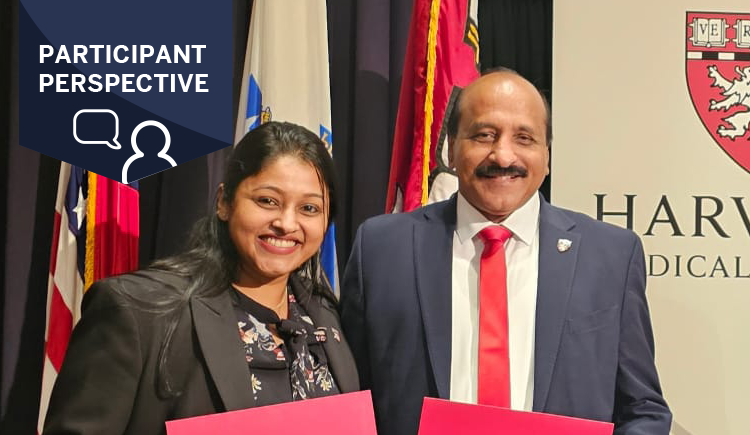
In many rehabilitation settings following acute hospital stays, patients often seek care for life-altering illnesses or injuries.
For Debra Blyth-Wilk, DNP, JD, RN, CPHQ, executive director of Nursing Practice Excellence at Spaulding Rehabilitation Network (SRN) and assistant professor at Mass General Institute of Health Professions, this means that Spaulding patients have an average length of stay of two to three weeks, compared with a three-to-four-days length of stay at most acute care hospitals. Patients at Spaulding are inpatient for a fair amount of time. Due to this, they frequently need specialty and follow-up care at other locations.
While some of those institutions might typically be viewed as a short drive away, ambulance backups, traffic, and other delays in the Boston area can result in patients being away from Spaulding for a considerable part of the day, often missing their medications, meals, and institutional therapy.
These delays can be stressful for both the patients and their families. Even before the COVID-19 pandemic, Blyth-Wilk and her colleagues at Spaulding started to explore ways to conduct some of their patient visits on a virtual basis so that patients would not have to leave the facility. “We are one of the few care settings that delivers telehealth on an in-patient basis, so the challenges we faced were somewhat unique,” she adds. But when the pandemic struck, the Spaulding team was ready to pivot quickly to virtual visits and provide almost all the follow-up and specialty care their patients needed.
“Instead of putting any patient in an ambulance and having them be out for the day, we are now able to do a virtual visit with a provider, and then our staff, which is typically nurses, therapists, or paraprofessionals, facilitates the visit,” explains Blyth-Wilk. What her team learned before, during, and after the recent pandemic has now been firmly institutionalized at the four in-patient facilities within the Spaulding Rehabilitation Network and serves as a model for other long-term and rehabilitation in-patient care facilities.
Elements of a Successful Virtual Telehealth Visit
Facilitators are the key to a successful high-quality, patient-centered virtual visit, according to Blyth-Wilk. For hospitals, she recommends starting with an organization’s patient family advisory council (PFAC), a body of former patients and family members of former patients from that hospital, to ask what would be important to them if they were in an in-patient facility and needed virtual care.
Facilitators can ensure a successful visit with quality outcomes by:
- Assessing the patient’s needs and preferences, including an accurate understanding of the patient’s language capabilities and communication preferences.
- Accommodating the patient’s physical needs.
- Arranging for an advocate, support person, or family member to help the patient communicate over telehealth with the provider.
- Providing privacy during the visit to ensure confidential conversations.
- Preparing the patient for self-management after discharge.
Pilot Study Confirms Benefits
Blyth-Wilk conducted a pilot study at her 123-bed SRN facility, implementing and evaluating a virtual-visit nurse-competency tool for the inpatient rehabilitation setting. “We found that after six weeks, the nurses reported a 24 percent increase in their confidence scores of facilitating a patient-centered virtual visit,” she says.
Given the encouraging results, the telecommunications training protocol has been incorporated into the annual competencies for staff, something Blyth-Wilk strongly encourages for any facility considering a similar program.
“We have accreditation from the Commission on Accreditation of Rehabilitation Facilities (CARF), and they require a competency for health care providers that facilitate virtual visits,” she adds. “It was very helpful to go through our accreditation visit, and they were highly complimentary of the program that we designed and piloted.”
A Positive Step in Virtual Nursing
Blyth-Wilk believes that the virtual care platform at SRN provides a strong foundation for virtual nursing.
“When I look at what’s going on now with health care facilities, the workforce shortages, and so many nurses that are burnt out or that do not know if they want to continue in nursing beyond a certain period of their life, I think about all of the opportunities we have virtually to change how we deliver care,” she says.
She explains that health systems need to design and implement virtual nursing models to help support the nurse at the bedside—but never to replace the nurse at the bedside because that human touch is what patients will always need. Her vision is to design ways to locate a nurse in a hospital room or on a virtual platform so they can do certain nursing tasks virtually, ensuring that the bedside nurse has more time to spend with patients.
Examples of virtual nursing could include discharging patients by reviewing medications, discussing follow-up care and upcoming appointments, answering questions, and providing reasons to return to the hospital or call one’s provider. “Generating the after-visit summary takes a lot of time, and a virtual nurse could take that off the bedside nurses,” Blyth-Wilk explains.
Then, the bedside nurse, personal care assistant, or nursing assistant would confirm with the patient that all questions have been answered and escort the patient to the lobby. “I have seen that done. There was a much quicker throughput from when the doctor orders the discharge to actually walking out the door, higher patient satisfaction, higher staff satisfaction, fewer readmissions, and better clinical outcomes.”
Another example of virtual nursing would be admission assessments where a patient arrives at a hospital, and a nursing assistant meets the patient and measures their vital signs. Then, a virtual nurse conferences in and does the admission assessment, which normally requires up to an hour for a thorough assessment. Afterward, the primary nurse does the part that has to be hands-on like a skin check. Since many facilities require a second skin check to make sure that the patient’s skin is intact, the virtual nurse could fulfill that role as well, reducing the need to pull another nurse away from patients.
Blyth-Wilk also foresees virtual nursing around mentoring and coaching of new nurses. “We have so many new graduate nurses at the bedside, and many of them have not had good clinical experiences because of COVID-19. So they really need a lot of mentoring and coaching from nurses that have many years of experience,” she explains.
Virtual nursing models would enable experienced nurses—to virtually coach a nurse through a procedure while working remotely. “It supports the nurses at the bedside and takes advantage of the valuable contributions that many experienced nurses would still like to provide,” she says.
For Blyth-Wilk, supporting nurses in providing excellent care is her life’s work. As a faculty member of the Safety, Quality, Informatics, and Leadership certificate program and the Masters in Healthcare Quality and Safety at Harvard Medical School, one of her professional goals is to attract more nurses to these programs. “It would be so valuable to them, their patients, and the institutions where they work.”


